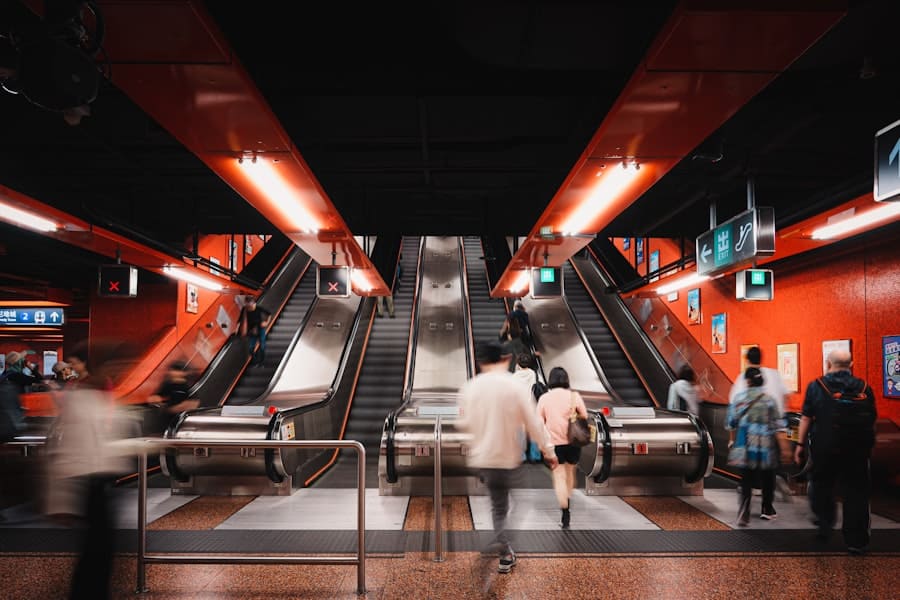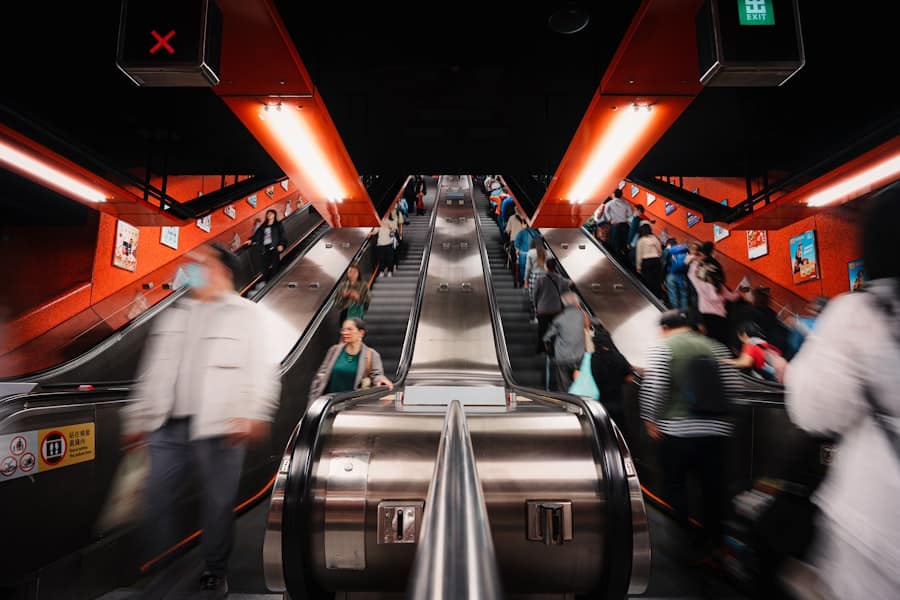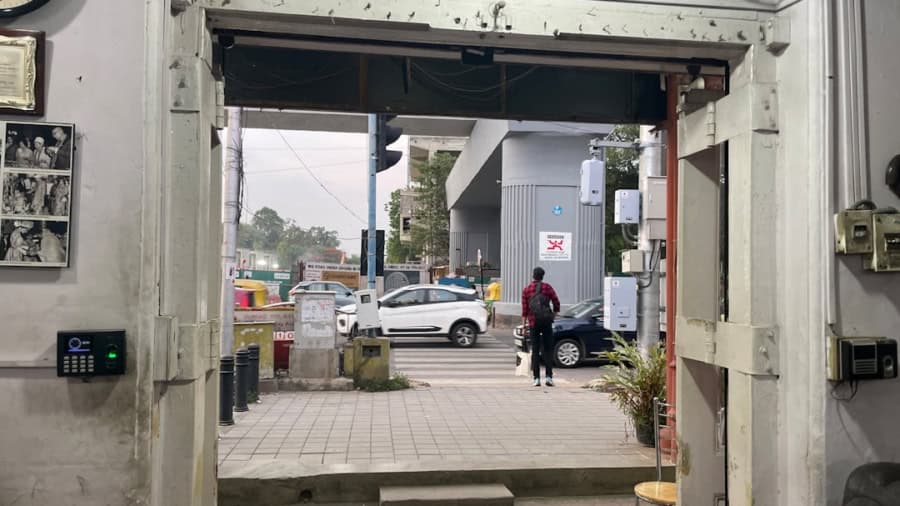Urban congestion has emerged as one of the most pressing challenges facing modern cities around the globe. As populations swell and urban areas expand, the infrastructure that supports transportation systems often struggles to keep pace. This phenomenon is not merely an inconvenience; it has far-reaching implications for economic productivity, environmental sustainability, and public health.
Traffic jams, overcrowded public transport, and the resulting delays can lead to significant economic losses, estimated in billions of dollars annually in major metropolitan areas. The complexity of urban congestion is compounded by various factors, including urban planning deficiencies, increased vehicle ownership, and the rise of e-commerce, which has led to a surge in delivery vehicles on city streets. Moreover, urban congestion is not just a matter of inconvenience; it also contributes to increased air pollution and greenhouse gas emissions.
Vehicles idling in traffic produce harmful emissions that degrade air quality and pose health risks to urban populations. The challenge is further exacerbated by the fact that many cities are ill-equipped to handle the influx of vehicles and pedestrians, leading to a vicious cycle of congestion that can seem insurmountable. As cities grapple with these issues, innovative solutions are urgently needed to alleviate congestion and improve the quality of urban life.
Key Takeaways
- Urban congestion is a growing problem in cities around the world, leading to increased traffic, pollution, and reduced quality of life for residents.
- The impact of urban congestion on cities includes economic costs, environmental damage, and negative effects on public health and well-being.
- AI technology can be used to predict urban congestion by analyzing traffic patterns, weather conditions, and other relevant data to anticipate and mitigate traffic jams.
- AI can help solve urban congestion issues by optimizing traffic flow, coordinating public transportation, and providing real-time information to drivers and commuters.
- Case studies have shown that AI solutions, such as smart traffic lights and predictive traffic management systems, have successfully reduced congestion and improved urban mobility in various cities.
The Impact of Urban Congestion on Cities
The ramifications of urban congestion extend beyond mere frustration for commuters; they permeate various aspects of city life. Economically, congestion can stifle growth by increasing travel times and operational costs for businesses. For instance, delivery services may face delays that affect their efficiency and customer satisfaction, leading to a ripple effect that impacts supply chains and retail operations.
A study conducted by the Texas A&M Transportation Institute found that congestion costs the U.S. economy over $166 billion annually in lost productivity. This staggering figure underscores the urgent need for effective solutions to mitigate congestion.
Socially, urban congestion can exacerbate inequalities within cities. Low-income communities often rely on public transportation systems that are already stretched thin due to overcrowding. As a result, these populations may experience longer commute times and reduced access to job opportunities, healthcare, and education.
Furthermore, the stress associated with long commutes can negatively impact mental health and overall well-being. The interplay between congestion and social equity highlights the necessity for comprehensive strategies that address not only traffic flow but also the broader implications for community cohesion and access to resources.
The Role of AI in Predicting Urban Congestion

Artificial Intelligence (AI) has emerged as a powerful tool in the quest to understand and predict urban congestion patterns. By leveraging vast amounts of data from various sources—such as traffic cameras, GPS data from vehicles, and social media feeds—AI algorithms can analyze real-time conditions and forecast potential congestion hotspots. Machine learning models can identify patterns in traffic flow, enabling city planners and transportation agencies to make informed decisions about infrastructure improvements and traffic management strategies.
For example, AI can process historical traffic data alongside current conditions to predict when and where congestion is likely to occur. This predictive capability allows for proactive measures, such as adjusting traffic signal timings or deploying additional public transport services during peak hours. Moreover, AI can facilitate dynamic routing for navigation apps, providing drivers with alternative routes to avoid congested areas.
By harnessing AI’s predictive power, cities can better allocate resources and implement strategies that enhance mobility while minimizing delays.
How AI Can Help Solve Urban Congestion Issues
Beyond prediction, AI offers a range of solutions that can actively mitigate urban congestion. One promising approach is the implementation of intelligent traffic management systems that utilize AI algorithms to optimize traffic signal timings based on real-time data. These systems can adapt to changing traffic conditions, reducing wait times at intersections and improving overall traffic flow.
For instance, cities like Los Angeles have begun experimenting with adaptive traffic signals that adjust their timing based on current vehicle counts, leading to smoother traffic movement and reduced congestion. Additionally, AI can enhance public transportation systems by optimizing routes and schedules based on demand patterns. By analyzing data from transit users—such as ridership trends and peak travel times—AI can help transit agencies make data-driven decisions about service frequency and route adjustments.
This not only improves the efficiency of public transport but also encourages more people to use these services instead of private vehicles, thereby reducing overall congestion levels. Furthermore, AI-powered platforms can provide real-time updates to commuters about delays or service changes, enhancing the user experience and promoting greater reliance on public transportation.
Case Studies of AI Solutions for Urban Congestion
Several cities around the world have successfully implemented AI-driven solutions to tackle urban congestion challenges. In Singapore, for example, the Land Transport Authority has developed an advanced traffic management system that utilizes AI algorithms to analyze real-time traffic data from various sources. This system enables dynamic adjustments to traffic signals and provides drivers with real-time information about congestion levels on different routes.
As a result, Singapore has seen a significant reduction in travel times during peak hours. Another notable case is Barcelona’s use of AI in its smart city initiatives. The city has integrated AI into its transportation planning processes, utilizing data analytics to optimize public transport routes and schedules based on user demand.
Additionally, Barcelona has implemented a smart parking system that uses AI to guide drivers to available parking spaces in real time, reducing the time spent searching for parking—a common contributor to urban congestion. These case studies illustrate how cities can leverage AI technologies not only to alleviate congestion but also to create more efficient and user-friendly urban environments.
Challenges and Limitations of Using AI for Urban Congestion

Despite the promising potential of AI in addressing urban congestion, several challenges and limitations must be acknowledged. One significant hurdle is the availability and quality of data. Effective AI models rely on accurate and comprehensive datasets; however, many cities struggle with outdated infrastructure or insufficient data collection methods.
Inconsistent data can lead to unreliable predictions and ineffective solutions, undermining the potential benefits of AI applications. Moreover, there are concerns regarding privacy and data security when utilizing AI technologies in urban environments. The collection of real-time data from individuals raises ethical questions about surveillance and consent.
Striking a balance between leveraging data for public good while respecting individual privacy rights is a complex challenge that cities must navigate as they implement AI solutions. Additionally, there is a need for collaboration among various stakeholders—including government agencies, private companies, and community organizations—to ensure that AI initiatives are equitable and serve the diverse needs of urban populations.
The Future of AI in Addressing Urban Congestion
Looking ahead, the future of AI in tackling urban congestion appears promising but requires careful consideration of various factors. As technology continues to evolve, advancements in machine learning algorithms and data analytics will likely enhance the accuracy of predictions related to traffic patterns and congestion levels. Furthermore, the integration of AI with other emerging technologies—such as autonomous vehicles and smart infrastructure—could revolutionize urban mobility.
Cities may increasingly adopt integrated mobility platforms that combine various transportation modes—such as public transit, ride-sharing services, and bike-sharing programs—into a single user-friendly application powered by AI algorithms. This holistic approach could encourage more sustainable transportation choices while reducing reliance on private vehicles. Additionally, as cities invest in smart infrastructure equipped with sensors and connectivity capabilities, real-time data collection will become more robust, enabling even more effective AI applications in managing urban congestion.
The Potential of AI in Creating Smarter, Less Congested Cities
The potential of AI in creating smarter, less congested cities is vast and multifaceted. By harnessing advanced technologies to predict traffic patterns, optimize transportation systems, and enhance user experiences, cities can take significant strides toward alleviating urban congestion challenges. However, realizing this potential requires a commitment to addressing data quality issues, ensuring privacy protections, and fostering collaboration among stakeholders.
As urban populations continue to grow and cities face increasing pressure on their transportation systems, the integration of AI into urban planning will be essential for creating sustainable solutions that enhance mobility while improving quality of life for residents. The journey toward smarter cities is ongoing; however, with strategic investments in technology and infrastructure coupled with a focus on equity and accessibility, there is hope for a future where urban congestion is effectively managed through innovative AI-driven approaches.
In a related article discussing the importance of technology in urban planning, The Next Web brings insights to the world of technology and its impact on city infrastructure. The article highlights how advancements in AI and data analytics can help predict and solve urban congestion problems, similar to the discussion in the article on The Role of AI in Predicting and Solving Urban Congestion Problems. To learn more about the latest trends in technology and urban planning, check out the article here.
FAQs
What is urban congestion?
Urban congestion refers to the traffic congestion and overcrowding of vehicles in urban areas, leading to slower traffic, longer travel times, and increased air pollution.
How does AI help in predicting urban congestion?
AI helps in predicting urban congestion by analyzing large amounts of data from various sources such as traffic cameras, GPS systems, and mobile apps to identify patterns and trends in traffic flow. This data is then used to predict future congestion and plan accordingly.
How does AI help in solving urban congestion problems?
AI helps in solving urban congestion problems by optimizing traffic flow, suggesting alternative routes, and coordinating traffic signals to reduce congestion. AI can also be used to develop smart transportation systems and autonomous vehicles, which can further alleviate congestion.
What are the benefits of using AI to address urban congestion?
The benefits of using AI to address urban congestion include reduced travel times, lower fuel consumption and emissions, improved air quality, and overall better quality of life for urban residents. AI can also help cities better plan and manage their transportation infrastructure.
Are there any challenges or limitations to using AI for urban congestion?
Challenges and limitations to using AI for urban congestion include the need for accurate and reliable data, potential privacy concerns with the collection of data from various sources, and the cost of implementing AI-based solutions. Additionally, AI solutions may not be effective in all urban environments and may require ongoing maintenance and updates.

